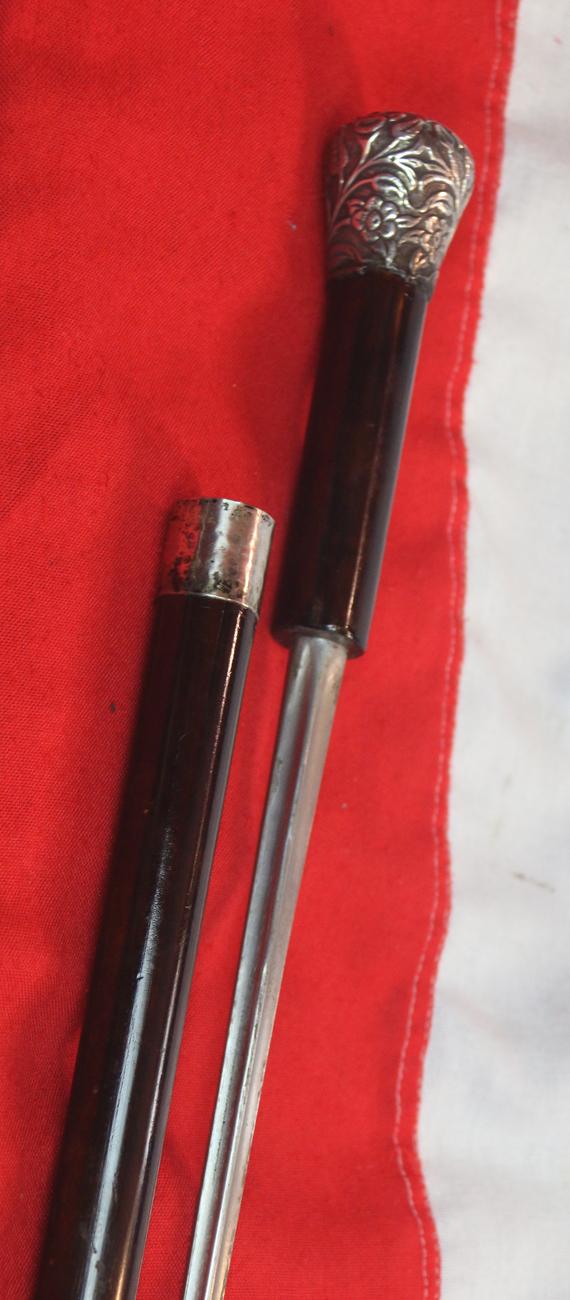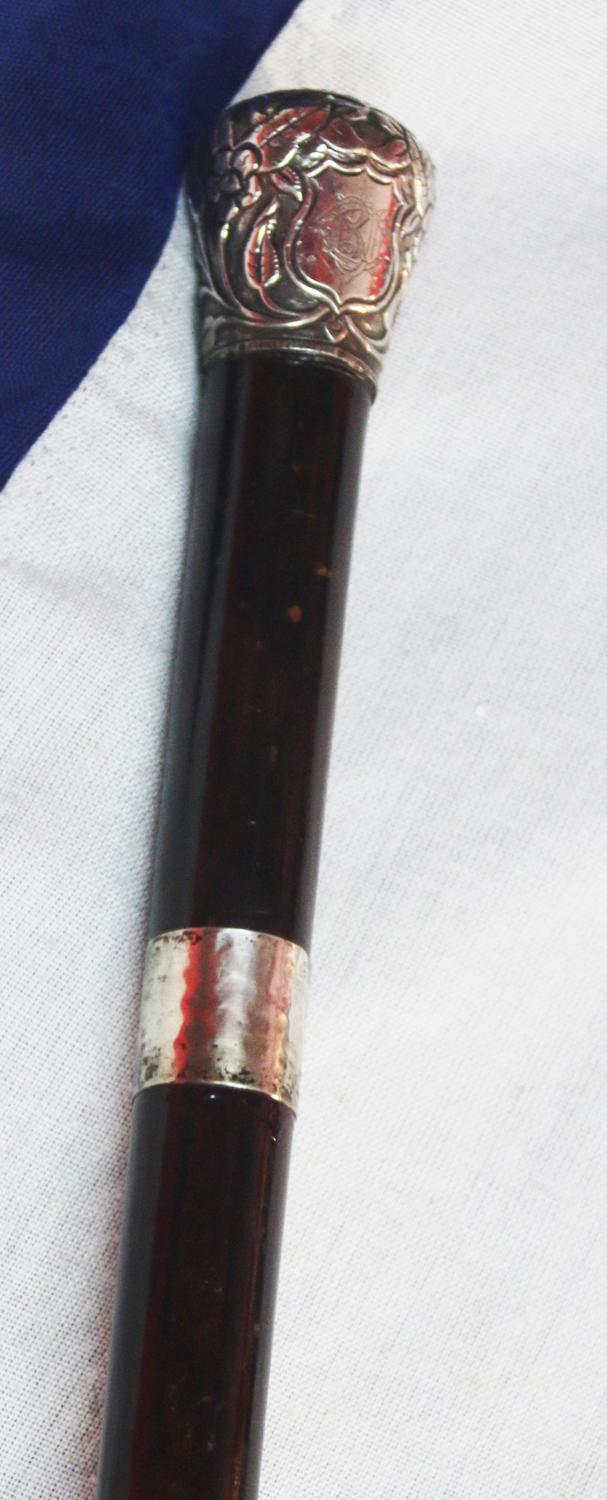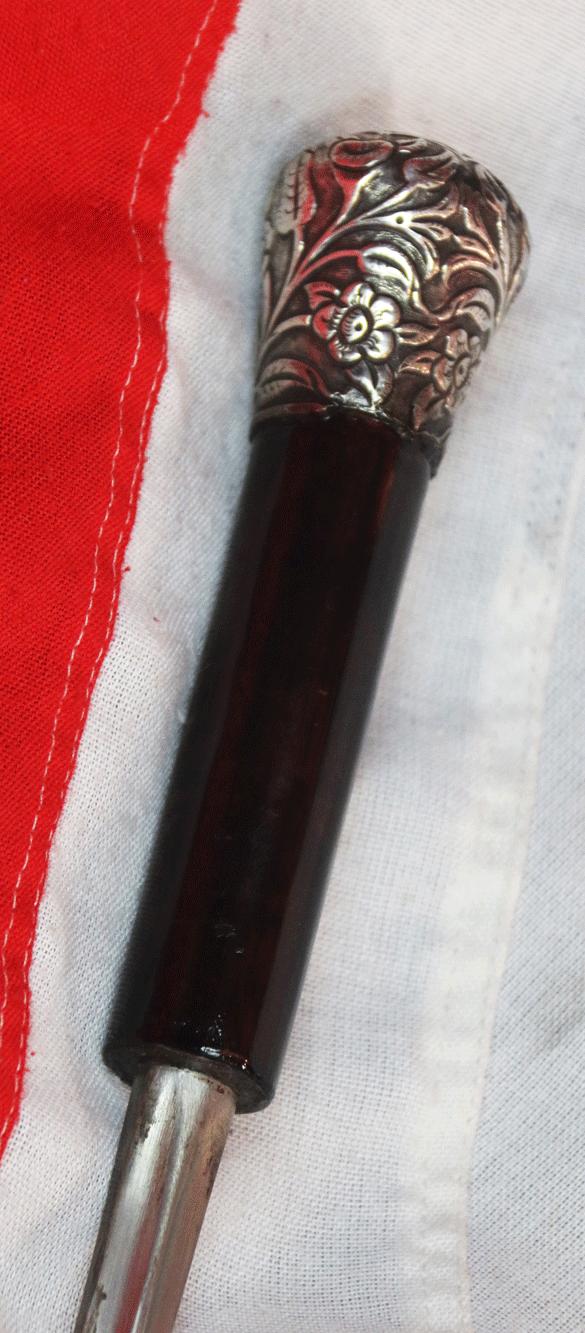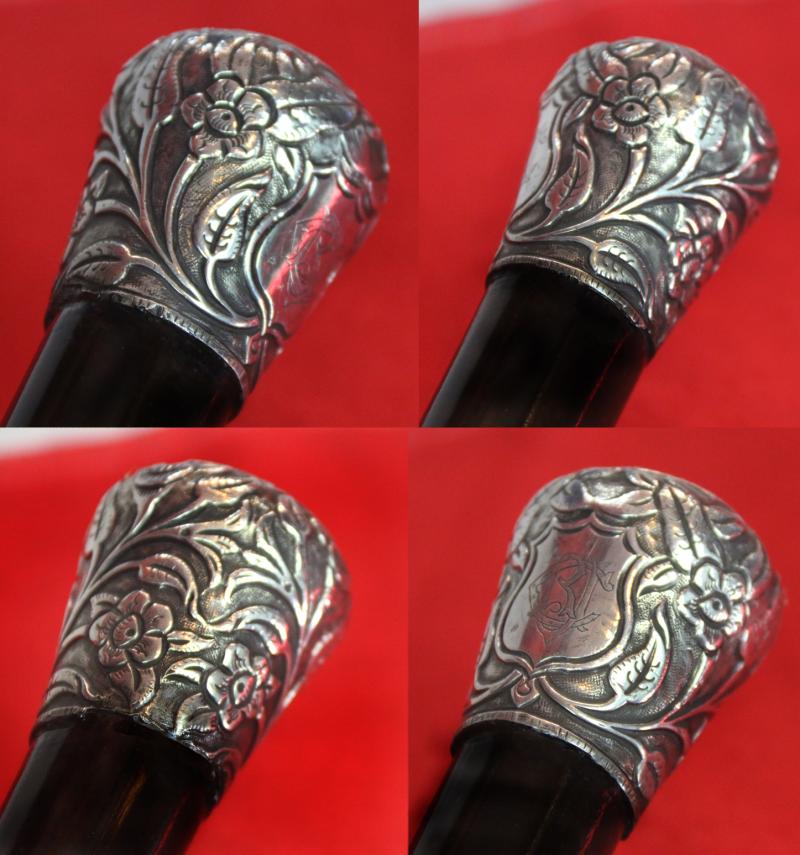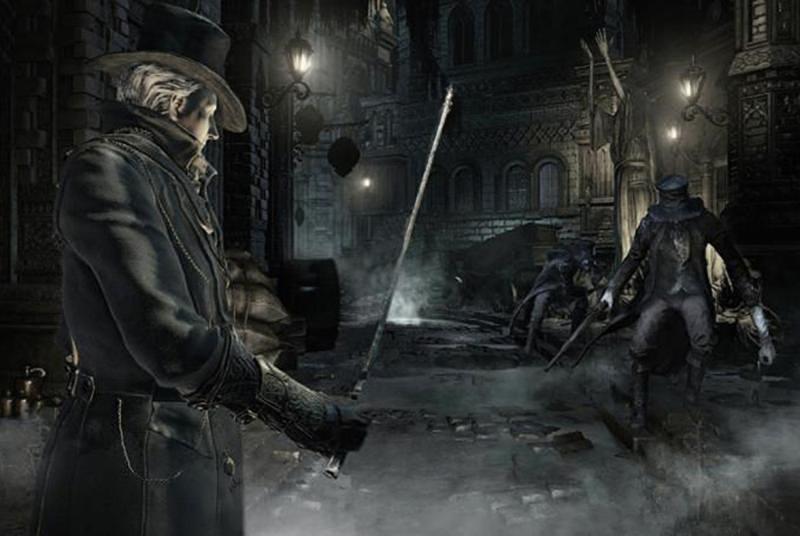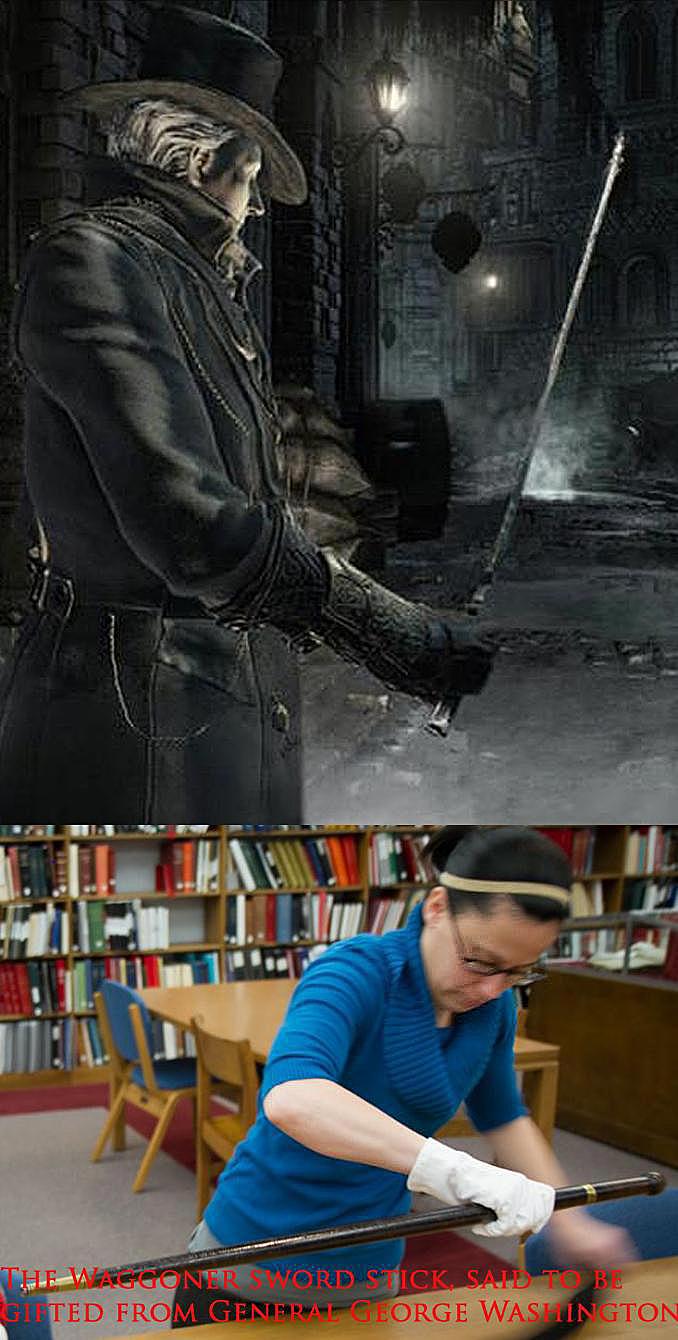A Good, and Most Attractive Victorian, Dress Hidden Sword Cane, With Beautiful Art Deco Silver Hilt
Dark hardwood cane with lacquer surface, silver repousse cane top decorated with art nouveau flowers and a shelld bearing a gentleman's monograme. Fine and strong full length blade, triple edged with a central fuller, with two narrow side fullers, and graduating to a point.
A sound and effective concealed personal protection sword that was highly popular during the Georgian to Victorian era. London, like many cities around the world at that time, could be a most treacherous place at night, and every gentleman, would carry a weapon for close quarter personal protection or deterrence. The early London Police force recruits 'Bobbies' or 'Peelers' named after Sir Robert Peel their founder were initially poorly selected {plus ca change!.}
Of the first 2,800 new policemen, only 600 kept their jobs, and the very first policeman, given the number 1, was sacked after only four hours service! Eventually, however, the impact upon crime, particularly organised crime led to an acceptance, and approval of the Bobbies.
Meanwhile, as the early police officers were so initially unpopular, and as the public of London had little or no confidence in them, armed personal protection was considered essential. Many would carry a small box-lock pistol or two, others might effect a sword stick. Things changed somewhat over the centuries, at least until the turn of the 21st century, before then, there were police patrols, and they were called, in those days, and 'a constables beat' was where one or two Bobbies, smartly attired in blue uniforms, and high helmet, actually used to patrol the streets, believe it or not, from the length and breadth of the entire country, often in pairs, maintaining law and order 24 hours of the day.
It was a system of public protection and confidence in the British police service that was immensely successful, and ran for for over one hundred & fifty years, in fact it was so successful it was, naturally, phased out, and duly replaced with something considered to be an radical improvement, declared as is so often these days, as, ‘for the benefit of the public’, and the new system was, and is still,...nothing whatsoever. And today's politicians, of all colours, are simply mystified as to why violent street crime is now all but endemic throughout all Britain.
The first sword canes were made for nobility by leading sword cutlers. Sixteenth century sword canes were often bequeathed in wills. Sword canes became more popular as the streets became less safe. Society dictated it mandatory that gentlemen of the 18th and especially 19th centuries would wear a cane when out and about, and it was common for the well-dressed gentleman to own and sport canes in a variety of styles, including a good and sound sword cane. Although Byron was proficient in the use of pistols, his lameness and his need to defend himself in some potentially dangerous situations made a swordstick doubly useful to him. He received lessons in London from the fencing master Henry Angelo and owned a number of swordsticks, some of which were supplied by his boxing instructor Gentleman John Jackson.
On Byron’s sword cane was the name NOEL BYRON, upon the ferrule of his one indicated that it was used after 1822, when Byron added the surname Noel after the death of his mother-in-law.
There are several references to sword sticks in the correspondence of Byron and his circle. Byron wrote to Hobhouse from Switzerland on 23 June 1816 asking him to Bring with you also for me some bottles of Calcined Magnesia a new Sword cane procured by Jackson he alone knows the sort (my last tumbled into this lake ) some of Waite's red tooth-powder & tooth-brushes a Taylor's Pawrsanias Pausanias and I forget the other things. Hobhouse responded on 9 July: Your commissions shall be punctually fulfilled whether as to muniments for the mind or body pistol brushes, cundums, potash Prafsanias Pausanias tooth powder and sword stick.
In the entry for 22 September 1816 in Byron's Alpine Journal he describes how, at the foot of the Jungfrau,
"Storm came on , thunder, lightning, hail, all in perfection and beautiful, I was on horseback the Guide wanted to carry my cane I was going to give it him when I recollected it was a Sword stick and I thought that the lightning might be attracted towards him kept it myself a good deal encumbered with it & my cloak as it was too heavy for a whip and the horse was stupid & stood still every other peal."
In a letter to Maria Gisborne of 6-10 April 1822, Mary Shelley described the "Pisan affray" of 24 March, in which Sergeant-Major Masi was pitch-forked by one of Byron's servants. She recounted how Byron rode to his own house, and got a sword stick from one of his servants.
Sword sticks came in all qualities, and for numerous purposes, from the simplest bamboo sword cane personal defender to stout customs officer’s ‘prod’, to offensive close quarter stiletto dagger canes and even to the other side of the world in the form of Japanese samurai’s shikome-sue, hidden swords.
We show two famous sword sticks in the gallery, one that belonged to Lord Byron, and another in a Presidential Centre Library collection, a historic sword stick is part of the Rutherford B. Hayes Presidential Centre Library collection in Fremont, Ohio from the Waggoner family, the sword-cane was said to have been presented to Mr Waggoner by General George Washington in honour of Waggoner's service in Washington's Life Guard during the American Revolutionary War
The blade is in excellent condition and fits very snugly into aperture to enable its 100% concealment. the silver top is good but with a small rim loss to the base of one side. the cane has usual natural age wear and patination.
Code: 24944
995.00 GBP



